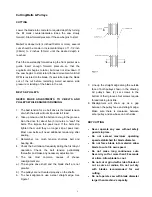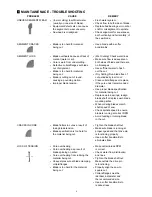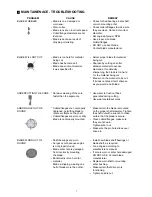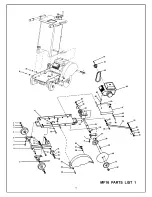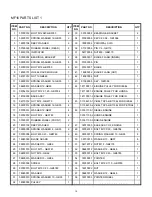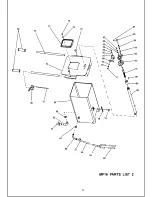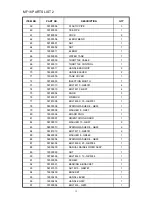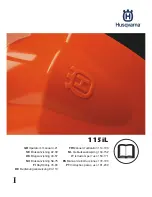
5
Cutting/Belts & Pulleys
CUTTING
Lower the blade into concrete to required depth by turning
the tilt crank counterclockwise. Ease the saw slowly
forward. Slow forward pressure if the saw begins to stall.
Note:
For deeper cuts (4 inches/102mm or more), several
cuts should be made in incremental steps of 1-1/2 inch
(38mm) to 2 inches (51mm) until the desired depth is
reached.
Push the saw steadily forward using the front pointer as a
guide. Exert enough forward pressure so that the
engine/motor begins to labor, but does not slow down. If
the saw begins to stall, retard forward movement until full
RPM is restored to the blade. If saw stalls, raise the blade
out of the cut before restarting. Avoid excessive side
pressure or twisting of the blade in the cut.
BELTS & PULLEYS
NEVER MAKE ADJUSTMENTS TO V-BELTS AND
PULLEYS WHILE ENGINE IS RUNNING.
1. The best tension for a v-belt drive is the lowest tension
at which the belts will not slip under full load.
2. Take up tension until the belts are snug in the grooves.
Run the drive for about five (5) minutes to “seat” the
belts. The impose the peak load. If the belts slip,
tighten them until they no longer slip at peak load.
Most new belts will need additional tensioning after
seating.
3. Remember, too much tension shortens belt and
bearing life.
4. Check the belt tension frequently during the first day of
operation. Check the belt tension periodically
thereafter and make any necessary adjustments.
5. The two most common causes of sheave
misalignment are:
a) The engine drive shaft and the blade shaft are not
parallel.
b) The pulleys are not located properly on the shafts.
6. To check alignment, use a steel straight edge. See
Figure 1.
7. Line up the straight edge along the outside
face of both pulleys shown in the drawing.
All pulleys have (2) set screws in the
bottom of their grooves. Set screws require
thread locking lock title.
8. Misalignment will show up as a gap
between the pulley face and straight edge.
Make sure there is clearance between
arbor pulley and saw base on both sides.
DRY CUTTING
●
Never operate any saw without safety
guards in place.
●
Do not exceed maximum operating
speed established for blade diameter.
●
Do not force blade into material: allow
blade to cut at its own speed.
●
Do not make long continuous cuts.
Never dry cut for more than 30 seconds
at a time. Allow blade to cool.
●
Do not cut or grind with side of blade or
cut a curve or radius. Do not cut dry
with blades recommended for wet
cutting.
●
Do not operate saw with blade diameter
larger than machine’s capacity.






